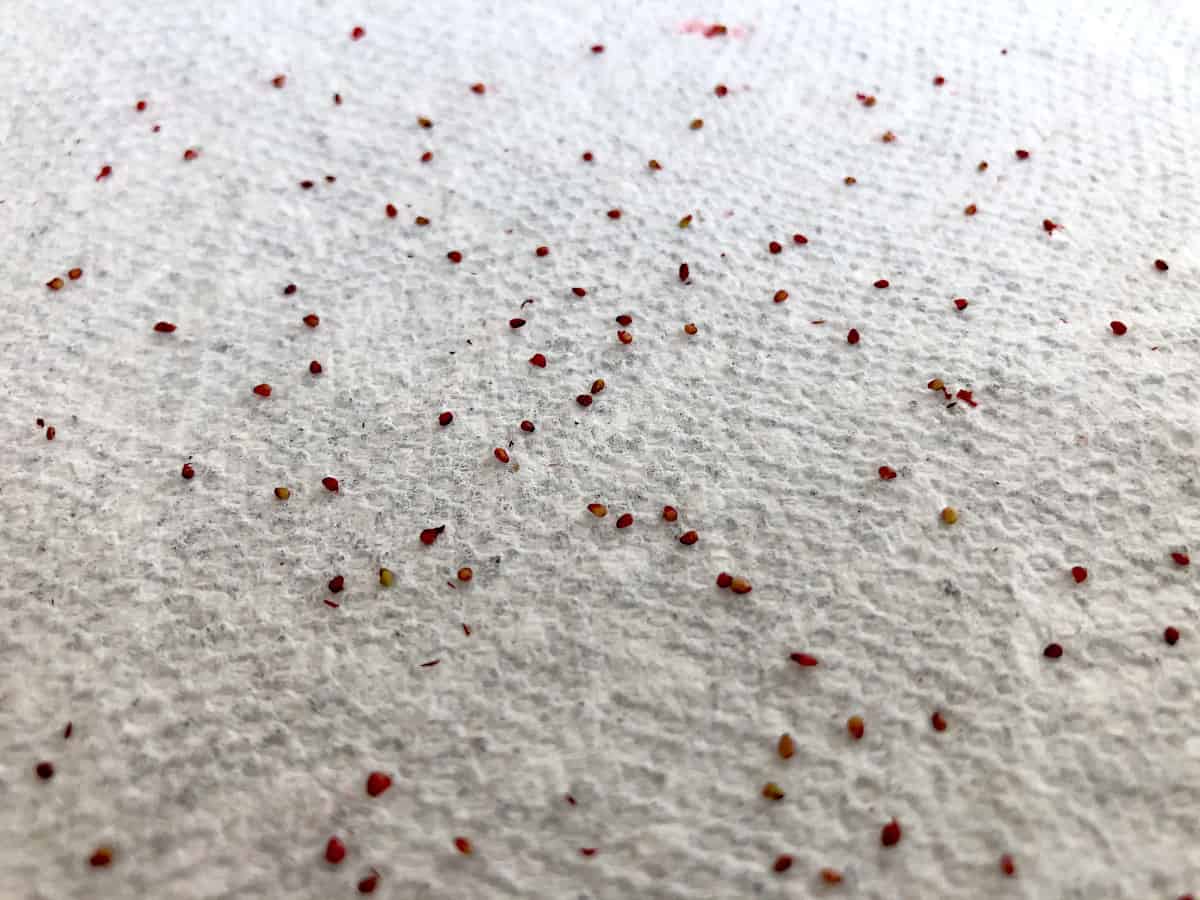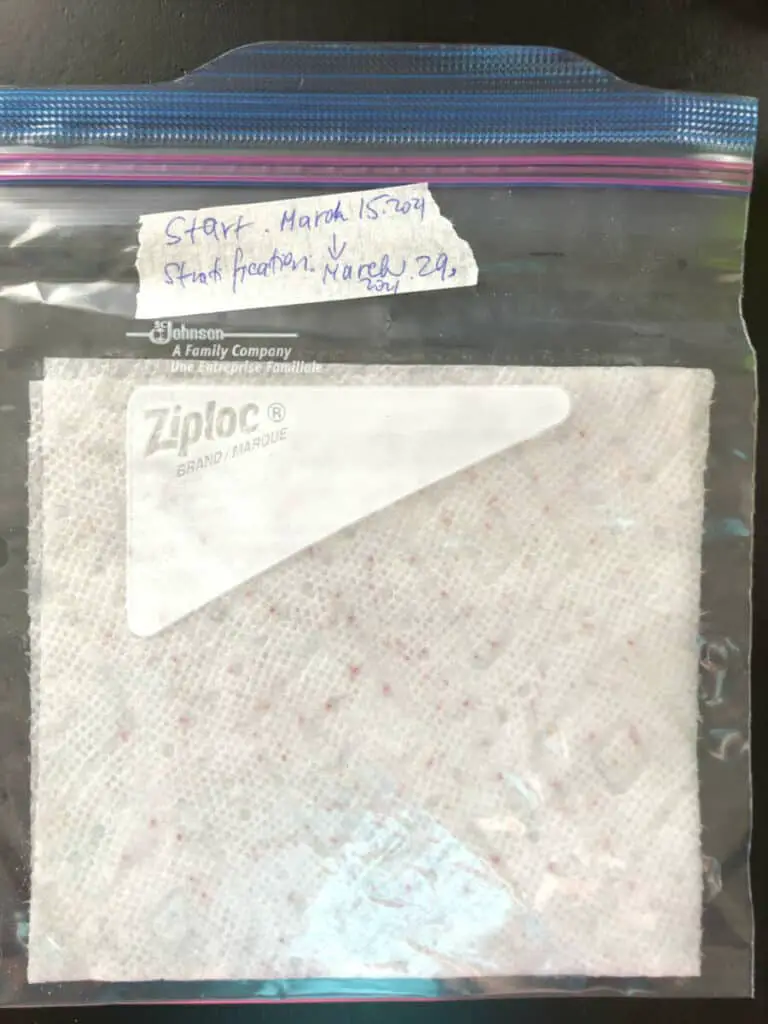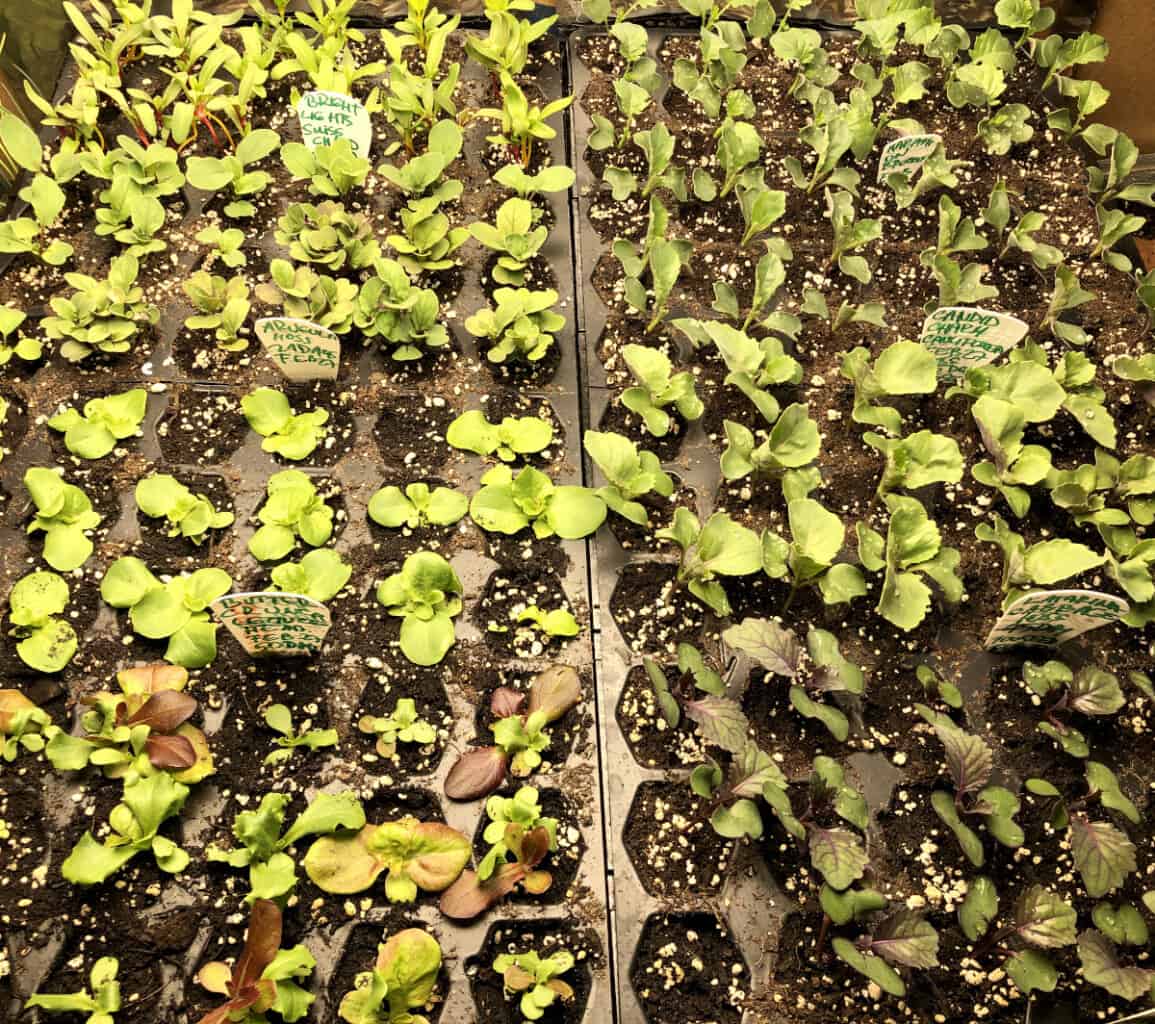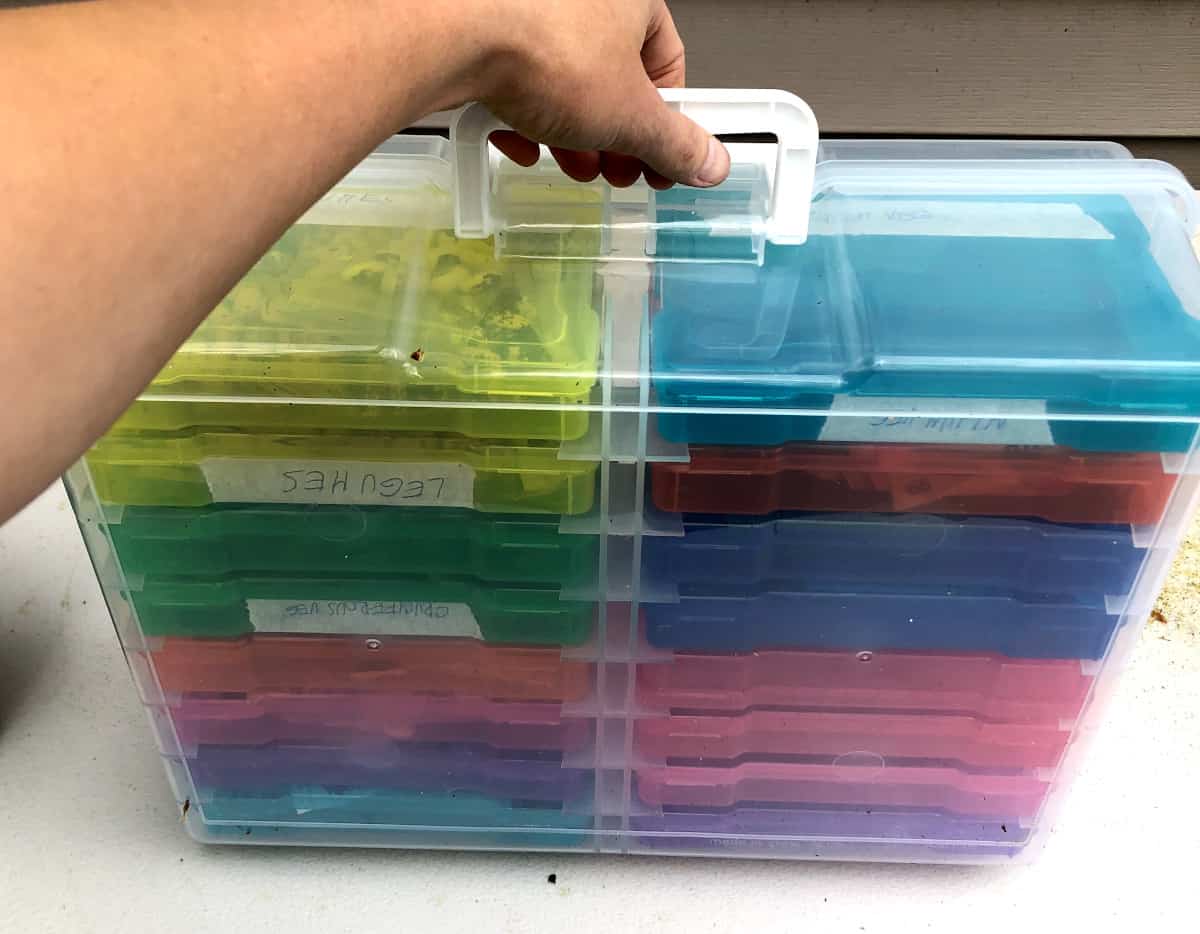If the seed is dead there is nothing you can do about it. Do not plant dead, non-viable seeds. But how does one find out if the seeds are viable or non-viable? Let us take a look at some of the ways to find out if the seeds we are about to sow are viable. Sowing viable seeds, we are setting our efforts for success.
Testing the viability of the seeds is a very simple task. All the seeds need to germinate is moisture, warmth, and oxygen. Take a sheet of paper towel. Place a sample batch of the seeds you want to find out if they are viable on the paper towel. Use at least 10 seeds or more to test the batch in a seed packet. Then spray the paper towel with the mist or wet the paper towel under warm water and squeeze the access water out. The paper towel should be damp but not dripping. Wrap the seeds in the moist paper towel enveloping all the seeds with moisture and place them in the zip lock bag or a sealable plastic container. Keep the zip lock bag or a plastic container in a constantly warm place with temperatures ideally around 80-85F. Most seeds will germinate even at lower temperatures somewhere around 70F, but some might need a warmer environment.

Why test seeds?
- Testing seeds saves you time. You prevent wasting time on seeds that do not sprout for you.
- It saves space. You do not waste precious growing space by having dead seeds occupy it.
- It helps maximize the growing season. Gardening is all about the right timing. If you missed the time window to germinate seeds or your seeds are not viable you just will also miss the time to plant your seedlings. It will mess up the planting dates and lessen the harvest. Having viable seeds is especially important for the growing zones with a shorter growing season.
- It saves effort, workload, and supplies. You do not invest time and supplies to plant dead seeds.
Sowing viable seeds is essential, if you plan to feed your family or stock your pantry with home-grown food, and you rely on your garden to produce for your family. Furthermore, if you plan to use your garden as a source of income, seed quality, and viability are one of the most important things to do before you even sow anything.
What is too wet for the seeds to germinate?
When the seeds are emerged in water, or in a too-wet environment, they will not be able to get any air and die. They might also turn into mush. If a paper towel is used, just gently mist the towel, or squeeze the access water out. The paper towel should be moist but not dripping drops of water.
Once the paper towel is locked-in in a zip lock bag or a container, the moisture will stay inside providing enough humidity for the seeds to germinate correctly.
You can easily remoisten the paper towel as needed. Check the seeds daily. Make sure the seeds do not dry out, it would be fatal for the seeds to dry out, or it might delay germination.
How warm is too warm for the seeds?
Temperatures over 90F can be too hot for most seeds. If the seeds are kept in a too-warm environment, they get cooked, and they might turn into mush.
A good, viable seed should sprout well in a proper environment. But a non-viable seed will not sprout, no matter how good the soil, how ideal the environment is, or how much effort you put into everything.

Do some seeds need light to germinate?
Yes, some seeds like celery and some wild flowers need light to germinate. You can test these as well. Test the seeds that need the light to germinate the same way as the other seeds, but instead of wrapping them in a paper towel, just keep them sitting on top of it and place them in a transparent plastic zip-lock or a container with a transparent lid. Check the seeds periodically if they need to be moistened. Keep them in a warm place but with at least 6 hours of light provided. A warm windowsill or under a grow light is a good place to test the seeds that need light to sprout.
Nothing can be more disappointing while gardening, than sowing seeds with excitement after all the careful preparation only to find your seeds did not sprout. It is discouraging.
How long does a germination test take?
Most seeds germinate within 7 days. But some seeds might take longer, up to 2 weeks. In general, if you have not seen anything happen within two weeks, most probably the seeds are not viable.
What is a good viability percentage?
70% seed viability is acceptable. If 7 out of 10 seeds sprouted in a viability test, go ahead and sow the seeds in the packet, and you should have success.

If your seed test revealed that the seed packet had less than 70% seed viability, and you still want to sow the seeds, you can sow them, just do not sow individual seeds in individual seed cells. Rather sow the seeds in groups to avoid having empty cells. Or overseed so you still have some plants left even though there are some non-viable seeds mixed in with viable ones.
How to avoid sowing non-viable seeds?
The best way to prevent yourself from sowing non-viable seeds or seeds with low germination rates is to get your seeds from a company that is reputable with a high germination rate. Another way to avoid non-viable seeds is to ensure proper storage. Store the seeds in a dry, cool, dark place in sealed containers. Always store completely dry seeds.

We might provide the best environment for the seeds to grow but if the seeds we sow are not viable, they will not grow. Our time, soil, labor, electricity, all these will be wasted if we plant non-viable seeds. One way to ensure we are not completely wasting all these is to ensure our seeds are viable before sowing them. If not sure if the seeds are any good, do a seed viability test.
Seeds are cheap compared to the time, labor, soil, electricity, and seed trays. All these combined, cost more than a packet of seeds. It is therefore worth it to test the seeds before sowing them.
As we expand our gardens, we might also purchase seeds from various seed providers. A seed viability test is a handy thing do to. Not all seed sources have the same quality of the seeds.
Seeds that were stored can also be tested. Test your old seeds before you decide to sow them, test them even before you decide to discard them.
If you have a problem germinating seeds or would like to germinate them faster, visit my other article How to germinate seeds faster.
Starting seeds might bring some difficulties your way. Read here, What are some common seed-starting problems.
The best way to start seeds outside
How to start seeds without grow lights

